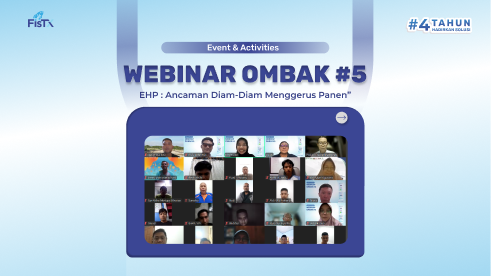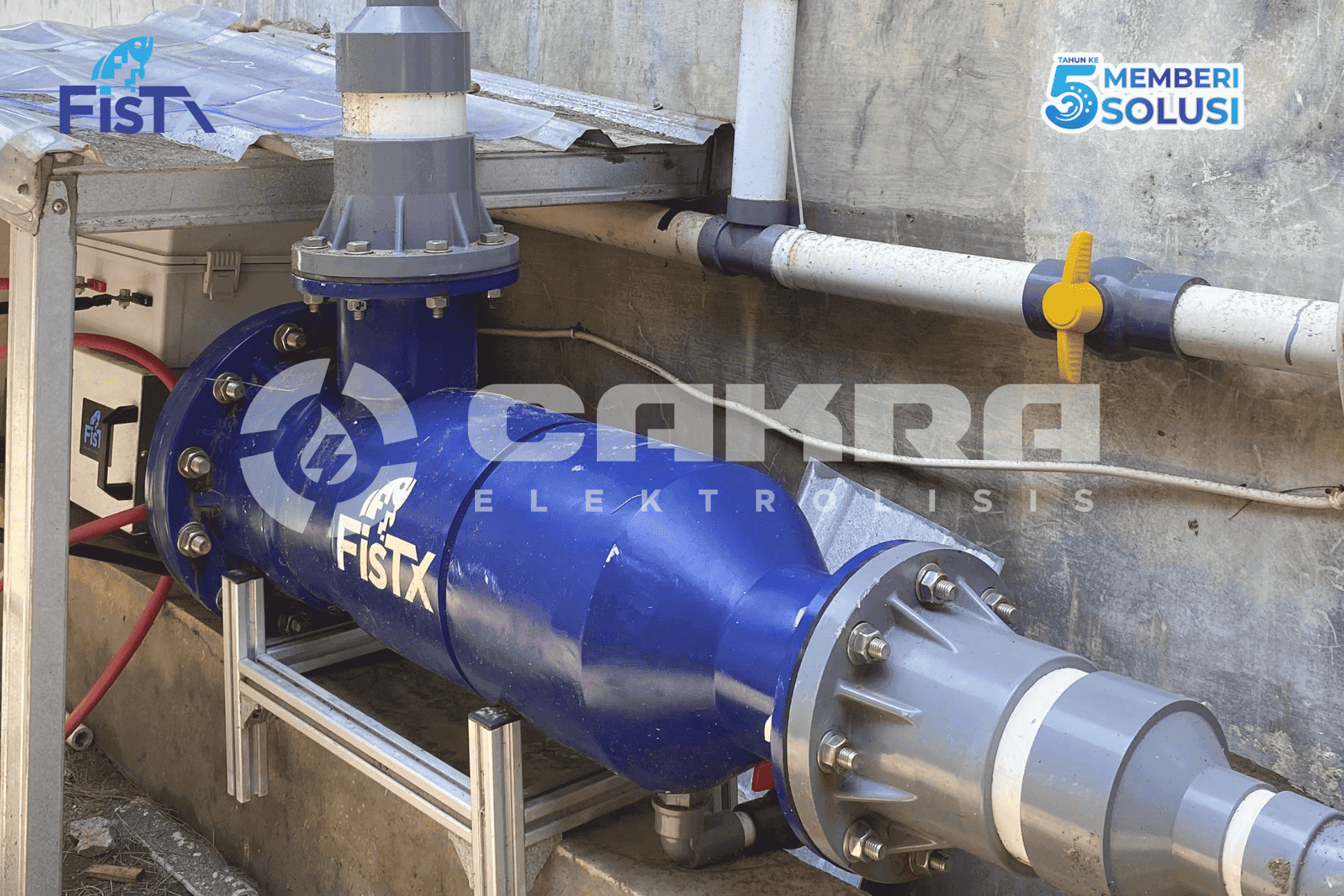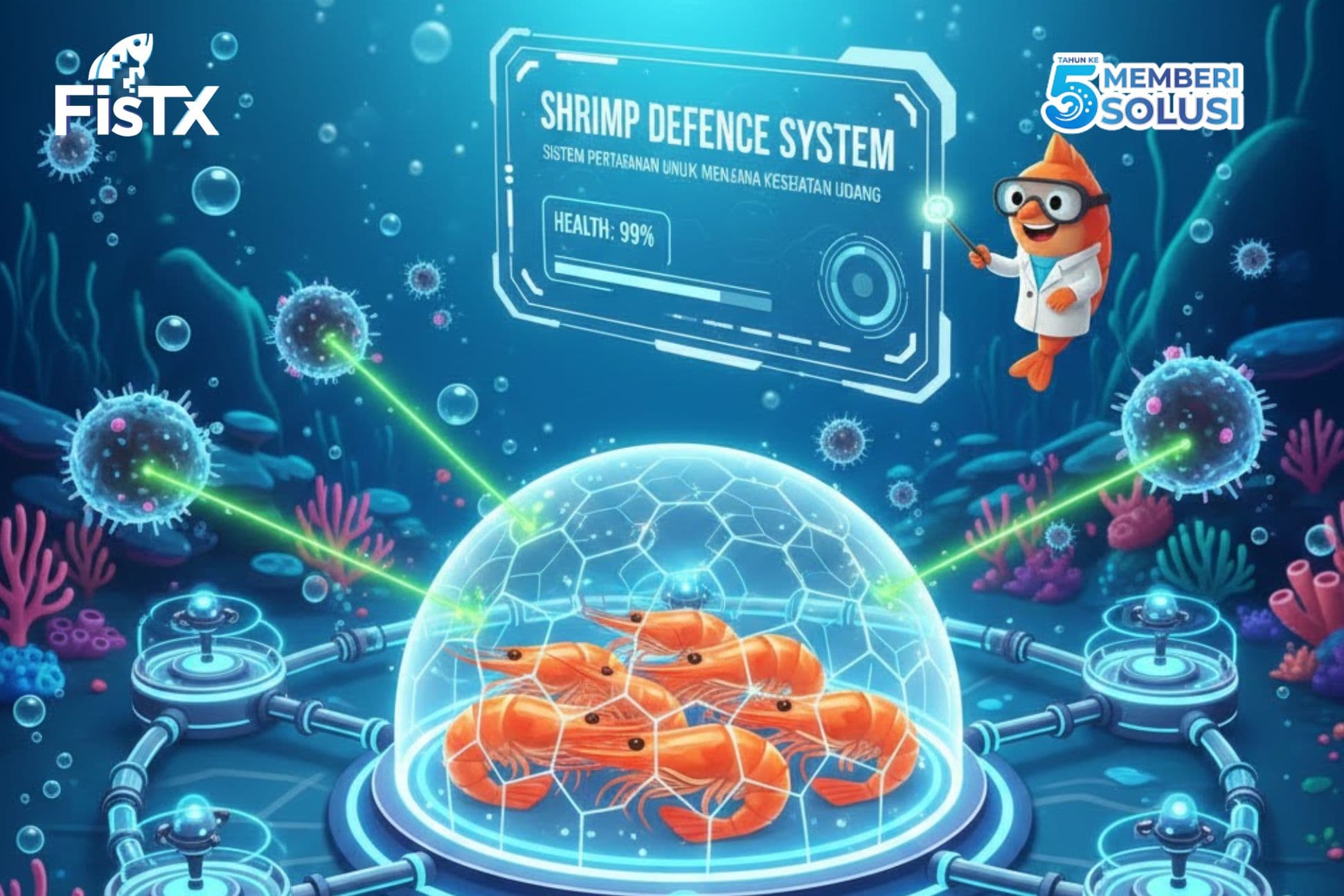
Unveiling Strategies to Combat the Threat of EHP Disease in Shrimp Farming
Sleman, Yogyakarta – June 30, 2025.
In response to shrimp farmers' growing concerns over Enterocytozoon hepatopenaei (EHP), a disease that silently undermines harvest potential, FisTx Indonesia successfully hosted the fifth edition of its OMBAK (Obrolan Tambak) webinar series. With the theme "EHP: The Silent Threat to Your Harvest", the event featured three experts from across the aquaculture supply chain, offering a deep dive into comprehensive EHP prevention and control strategies.
Broadcast live via YouTube, the webinar featured Dr. Prakan Chiarahkhongman (Director of AAHC CP Florida), Waiso (Chairman of the Aquaculture Practitioners Communication Forum/FKPA 2024–2029), and Rico Wisnu Wibisono (CEO of FisTx Indonesia). The speakers thoroughly addressed the threat posed by EHP, which has become one of the leading causes of declining shrimp farm productivity in Indonesia.
Understanding the Principles of EHP Prevention
Dr. Prakan Chiarahkhongman explained the biological fundamentals of EHP and why this pathogen is particularly difficult to control. He emphasized that EHP is a “hidden enemy” that infects the shrimp's hepatopancreas, a vital organ for digestion and nutrient absorption. A key point is the ability of EHP spores to survive in the environment for extended periods and reproduce rapidly — with a single infected cell capable of producing thousands of new spores daily.
His recommended prevention strategy revolves around three core pillars: hatchery biosecurity, pond preparation, and environmental management. Dr. Prakan stressed the importance of investing in high-quality, pathogen-free (SPF) post-larvae as a non-negotiable first step. He also highlighted the necessity of thorough pond drying and disinfection to break the life cycle of any remaining spores from previous cultivation. Maintaining clear water and avoiding overfeeding is crucial, as organic particles and feed residues can serve as "vehicles" for EHP spores to spread and infect shrimp.
Controlling EHP from Hatchery to Grow-Out Pond
Speaking from a field practitioner's perspective, Waiso shared tested and practical insights. He emphasized that discipline, consistency, and the courage to abandon ineffective habits are key to successfully fighting EHP. According to him, many shrimp farmers fail because they focus too much on early growth, whereas the first 42 days should be dedicated to ensuring shrimp survival.
His approach centers on precise feed and organic waste management. Waiso encouraged farmers to routinely replace water and siphon out sediment to remove leftover feed and feces — prime sources of disease. He also stressed the importance of maintaining close communication with hatcheries to understand the genetic profile of the post-larvae, allowing for better feed program adjustments. "Don’t be afraid to switch feed or probiotic brands if they’re not working. Long-term success is more important than sticking to old habits," he stated.
Tackling EHP with Water Management Technology
Rico Wisnu Wibisono of FisTx Indonesia bridged biology and field practices with technology- and engineering-based solutions. He presented that EHP risks can be mitigated through measured, data-driven approaches, rather than guesswork. A key technology he highlighted was the use of medium-pressure UV systems for incoming water disinfection, proven to inactivate up to 99% of free-living EHP spores.
Rico further elaborated on engineering concepts such as carrying capacity optimization and efficient water reservoir (tandon) systems for cost-effective biosecurity. He also introduced innovations in pond bottom management, including the use of shrimp toilets and automated solid waste disposal systems, which help maintain a consistently clean farming environment. His presentation emphasized that adopting the right technology is no longer optional — it is a must for building sustainable, disease-resilient modern shrimp farms.
Join the OMBAK Community
The full recording of OMBAK Webinar #5 is available on the FisTx Indonesia YouTube channel CLICK HERE.
For further discussions and the latest aquaculture updates, join the OMBAK (Obrolan Tambak) Community via the following WhatsApp link: CLICK HERE.


